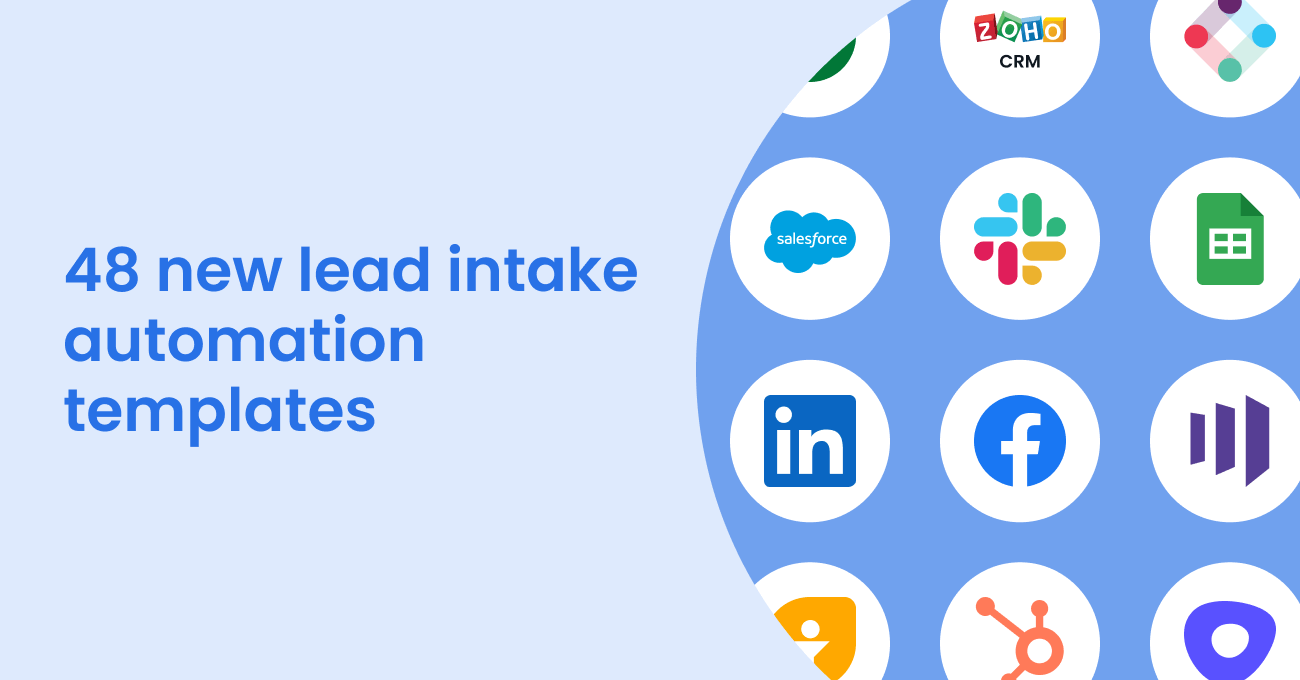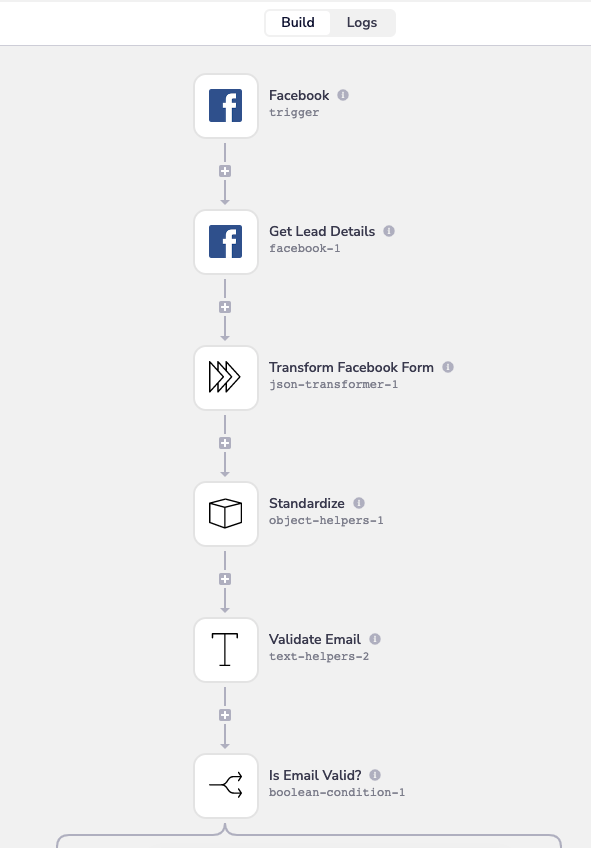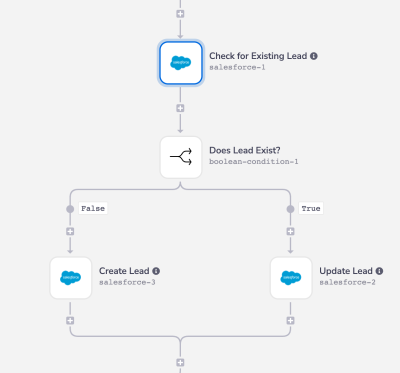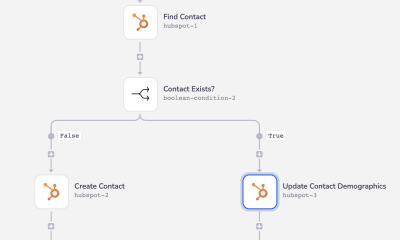Announcing: 48 new lead intake automation templates


Zane Ravenholt
Zane Ravenholt, Automation Architect
We're releasing FORTY EIGHT templates to help you automate lead intake, empowering RevOps to hit the ground running fixing their leaky funnels with a best-in-breed automation platform.
Hello there RevOps practitioners! Today we have an exciting announcement for those of you forward thinking automators interested in using Tray.io to automate your lead lifecycle. We’re launching FORTY EIGHT new templates geared towards the critical lead lifecycle jobs to be done for lead intake:
Capture leads from any source
Cleanse them before they hit source of truth
Record them to your source of truth (aka CRM or MAP)
We’re releasing these templates to empower builders like yourself to hit the ground running fixing your leaky funnels with a best-in-breed automation platform like Tray.
Interested in learning more about these templates and seeing them in action? Check out our recent webinar diving deep into this topic! Watch here
So, why did we start here?
For starters, reliable lead intake is essential for maximizing the return on your marketing investment - without a high quality process in place, revenue will suffer – but the process is nuanced and complex. We often hear about the pains MOPs/RevOps teams face in making sure leads are processed at the speed their prospects and businesses demand. Whether that be due to having to manually process CSVs, their MAPs being incapable of accommodating all their lead sources, campaign teams dropping new systems in their lap, or perhaps bad data coming in from legacy programs – there’s simply A LOT of complexity that ends up bogging down quality leads in the funnel.
The best way to stamp these issues out, is to start from the top; aka - lead intake. By ensuring this stage of your lead lifecycle is working flawlessly, you can steadily work your way further into the lead lifecycle, shoring up the order of operations to ensure no leads slip through the cracks, with each one receiving the attention and timely follow up they deserve.
To do this right, you need the flexibility to handle the unique requirements of your GTM strategy and RevOps processes. No matter what is thrown at you, a world class automation solution like Tray opens those black boxes up, removes manual work, and empowers your RevOps teams to focus their time on more meaningful tasks.
We’ve been hard at work behind the scenes developing a solution architecture for the templates that’s simple enough for you to get started with the fundamentals. If your needs are more nuanced, don’t worry – the flexibility of Tray leaves plenty of room for you to extend them as required.
At its core, the lead intake process is fairly straightforward, with 3 questions that need to be answered:
“Where are the leads coming from?” (aka, the lead source)
“Where are the leads going to?” (aka, the lead destination)
“What steps do we take to ensure we’re ready to engage/take action?” (aka - the data cleansing processes)
When architecting a solution for these 3 questions, it is important to understand the business logic of what we are trying to achieve. First, the lead source would be the location where the leads are coming from. This could be a platform like LinkedIn or Facebook; a place where you capture leads externally, or a CSV/Excel file containing an already populated list of new leads, say from a trade show you sponsored.
Second, before uploading those leads to a source of truth system, we need to make sure each lead is cleansed properly. This can include data normalization (each lead’s properties must match a certain format), data validation (each lead must have a certain list of data points), data cleansing (removing any “bad eggs” such as fake emails or blank entries), and data enrichment (supplementing existing data by making additional calls to platforms like Clearbit or ZoomInfo).
In the templates we created, for example, regardless of the lead source, each is required to have a valid email syntax and to have the following data points:
First Name
Last Name
Email
Phone Number
Company
Lead Source
UTM source, medium, and campaign
Finally, the lead destination would most often be a customer relationship management (CRM), or marketing automation platform (MAP), like Salesforce, Hubspot, or Marketo. Of course, nobody wants duplicates there, so each template checks to see if a lead already exists first, either updating an existing one, or creating a new lead if none are found.
Each of the dozens of templates we created (which you can find on our templates site) all follow the same essential logic outlined above, here’s an example showing leads being captured and cleansed from Facebook:

In this example, we capture the leads in real time, clean up the data a bit, make sure their email is valid, and standardize the structure of the data before moving on.
We then send the lead to its destination using the cleansed data pulled from the “standardize” step, conducting a few logic checks along the way to see if we should create a new lead or update an existing one.
Here’s an example of a Salesforce destination:

Notice that Hubspot destination isn’t much different:

Following this basic structure allows you to mix and match nearly any lead source with nearly any lead destination. Make sure to explore these templates on our templates site.
To guide you each step of the way, each template explainer has a full video and written walkthrough on its details page, allowing you to get up to speed fast with minimal effort. If you do not find the exact template you are looking for in our collection, grab a partial template using just the source or destination you want, and then build the other half yourself.
Furthermore, if you need any help, you can request a personalized, one-on-one, 30-minute workflow building session by booking time with a Tray representative today.
We plan to release even more templates in the near future related to both lead intake and other key aspects of the lead lifecycle (e.g., lead routing), so make sure you subscribe to our blog below so you can hear first about what we’re releasing.